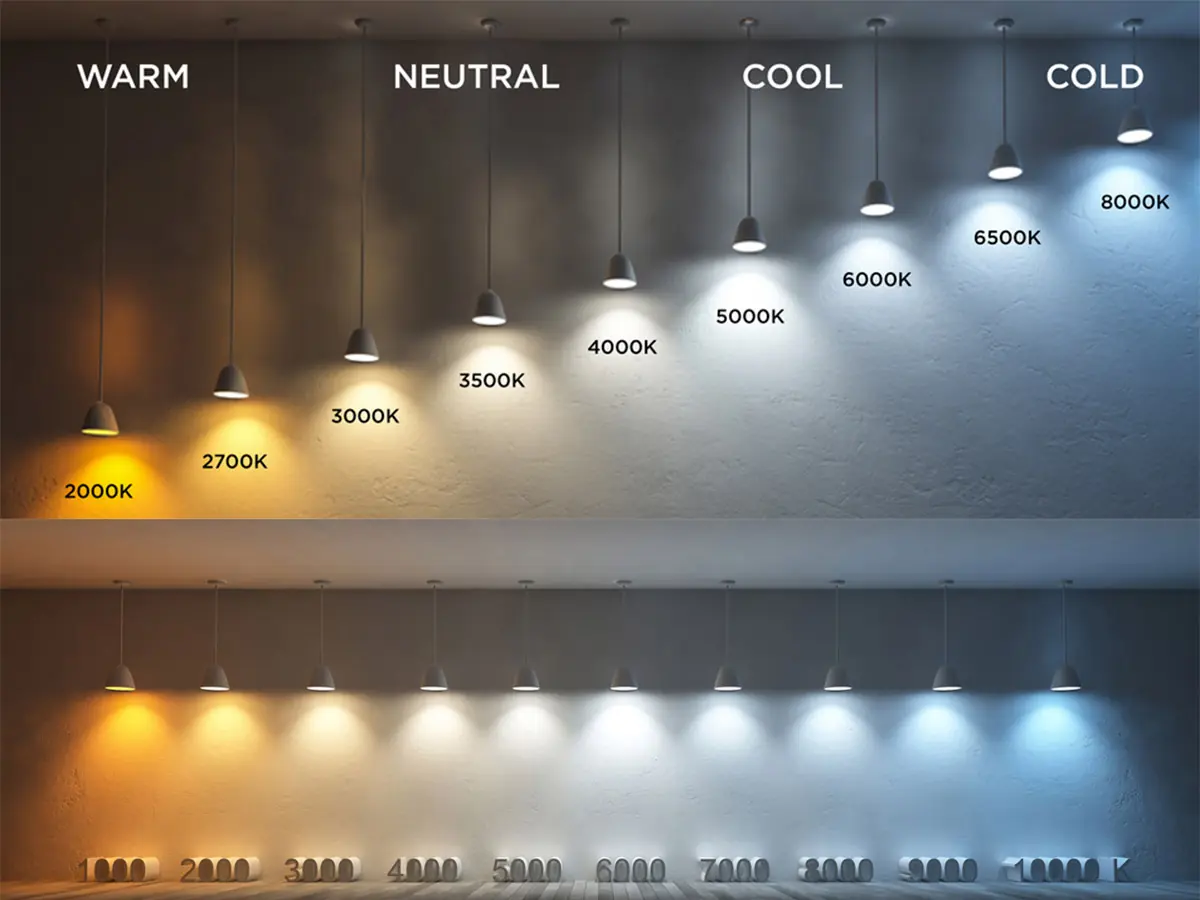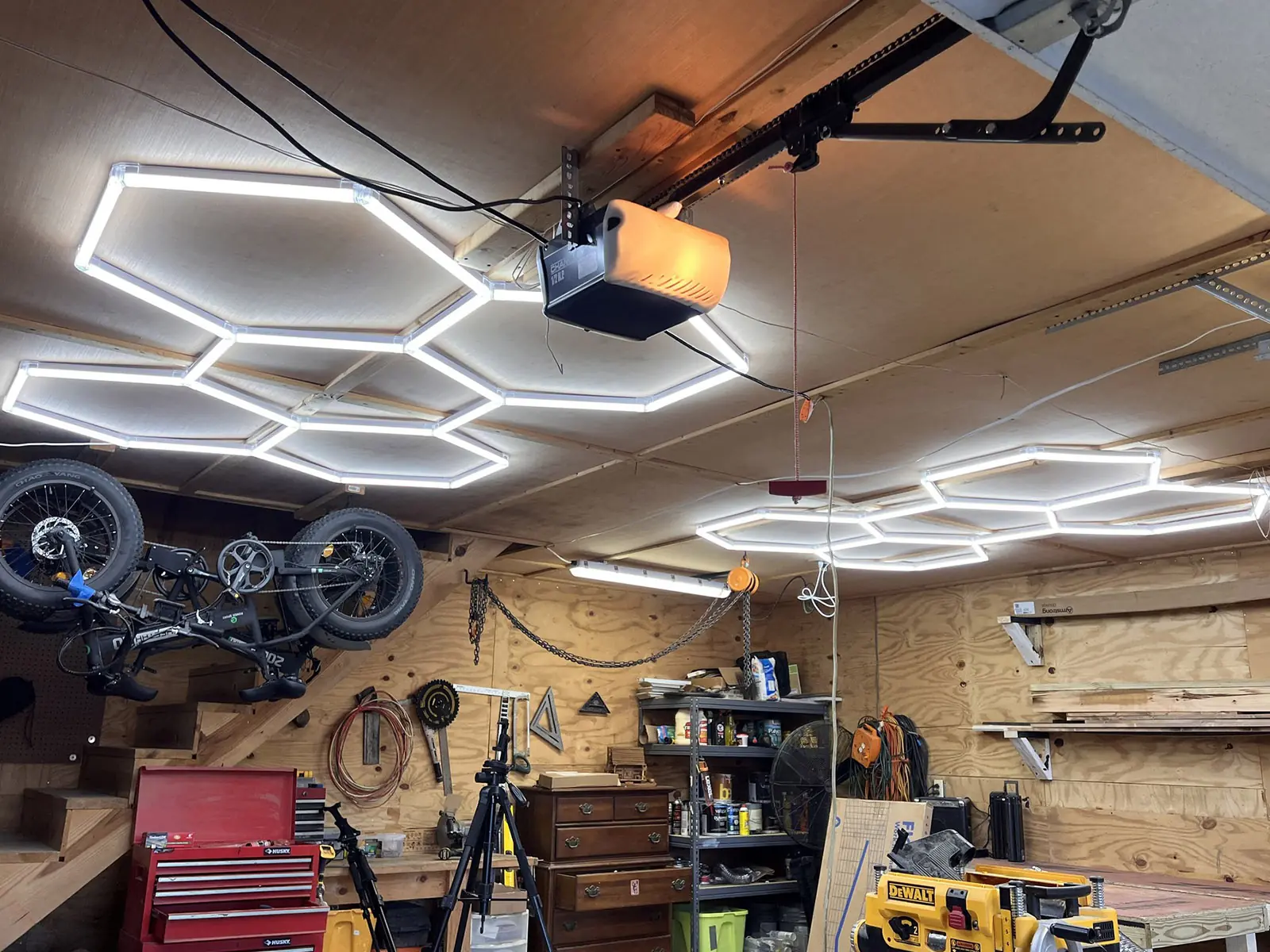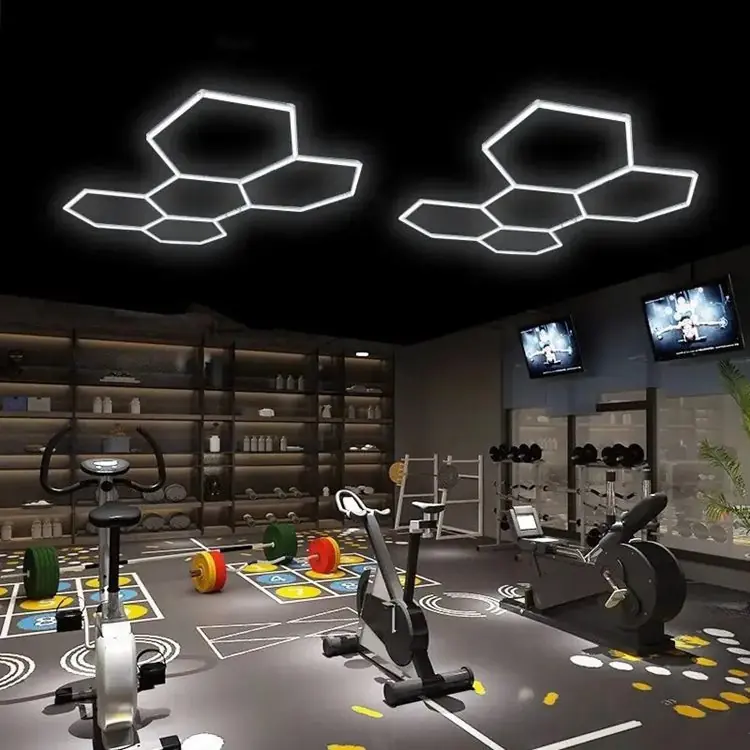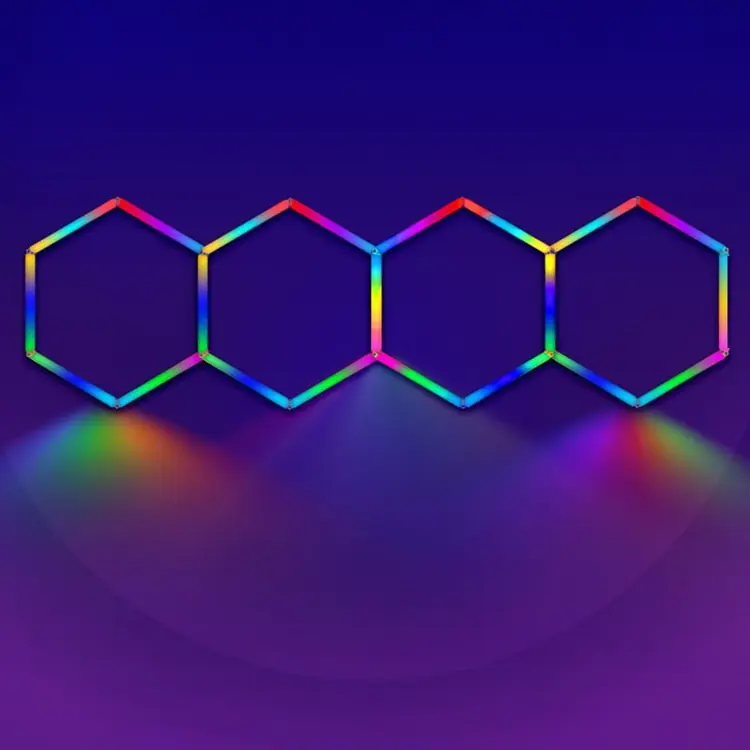-
Adăuga: Zona industrială Maohui, orașul Henglan, orașul Zhongshan, Guangdong, China
-
Tel: +86 158 8963 0817
-
E-mail: [email protected]

Înțelegerea albului strălucitor față de lumina zilei în iluminatul cu LED
Cuprins
Când selectați iluminarea cu LED-uri, apar doi termeni obișnuiți: alb strălucitor și lumină naturală. Aceste opțiuni de iluminare diferă în ceea ce privește temperatura de culoare, ambianța și aplicarea, ceea ce face esențial să înțelegeți modul în care fiecare afectează spațiul dvs. Acest articol explorează aceste diferențe în detaliu, îndrumându-vă să luați o decizie informată în funcție de nevoile dvs. de iluminat, fie pentru uz rezidențial sau comercial.

Elementele fundamentale ale temperaturii culorii
Temperatura de culoare, măsurată în Kelvin (K), definește cât de caldă sau rece apare o sursă de lumină. Joacă un rol esențial în determinarea stării de spirit, a eficienței și a confortului în orice mediu. Luminile LED oferă de obicei trei game de temperatură de culoare: alb cald, alb strălucitor și lumină naturală. Albul strălucitor și lumina zilei sunt accentul aici, cu utilizările și beneficiile lor distincte.
| Interval de temperatură | Tip de culoare | Descriere | Cel mai bun pentru |
|---|---|---|---|
| 2700K–3000K | Alb Cald | Strălucire moale, gălbuie | Spații de relaxare (de exemplu, dormitoare) |
| 3500K–4100K | Alb strălucitor | Iluminare neutră, clară | Bucatarii, birouri, spatii de lucru |
| 5000K–6500K | Lumina zilei | Lumină rece, alb-albăstruie | Studiouri, iluminat de lucru, lectură |
Pentru opțiuni suplimentare LED de înaltă performanță, luați în considerare explorarea lumini hexagonale, o soluție de iluminat versatilă ideală pentru diverse medii interioare.
Ce face specială iluminarea albă strălucitoare?
Aplicații ale becurilor albe strălucitoare
Becurile cu LED alb strălucitor oferă o lumină neutră care se află între tonurile calde și reci. Cu o temperatură de culoare de la 3500K până la 4100K, becurile albe strălucitoare sunt ideale pentru spațiile în care sunt necesare claritate și precizie.
Utilizări comune:
- Bucătării: Îmbunătățește vizibilitatea în timpul pregătirii și gătirii alimentelor, asigurând siguranță și plăcere.
- Băi: Oferă iluminare clară pentru sarcinile de îngrijire fără a arunca umbre dure.
- Spații de lucru: Îmbunătățește concentrarea prin crearea unui mediu propice productivității.
Avantajele becurilor albe strălucitoare:
- Versatilitate: Potrivit pentru o gamă largă de spații, de la bucătărie la birouri.
- Eficiență energetică: Becurile LED alb strălucitor reduc consumul de energie, oferind în același timp o luminozitate mare.
- Claritate vizuală: Vizibilitatea îmbunătățită face ca iluminarea albă strălucitoare să fie perfectă pentru sarcinile care necesită concentrare și precizie.
Pentru mai multe informații despre iluminatul LED specializat pentru spațiul dvs. de lucru, consultați Lumini LED hexagonale.
Beneficiile unice ale becurilor de zi
Unde să folosiți becurile de zi
Becurile de zi (5000K–6500K) reproduc lumina unei zile senine și însorite, făcându-le ideale pentru mediile care au nevoie de luminozitate naturală. Nuanța lor albăstruie sporește concentrarea, vigilența și acuitatea vizuală.
Utilizări optime:
- Zone de lectură: Previne oboseala ochilor oferind o iluminare echilibrata, naturala.
- Studiouri de artă: Oferă o reprezentare precisă a culorilor, ajutând artiștii și designerii să lucreze cu culori adevărate.
- Iluminarea sarcinii: Ideal pentru activități precum cusut, artizanat sau orice sarcină bazată pe precizie.
Beneficiile becurilor de zi:
- Simularea luminii naturale: Perfect pentru spațiile care nu au lumina naturală a soarelui, aducând vibrație în aer liber în interior.
- Creșterea productivității: încurajează concentrarea, făcându-l o opțiune de preferat pentru spațiile de lucru.
- Sănătate și bunăstare: Becurile de zi pot ajuta la reglarea ritmurilor circadiene, contribuind la îmbunătățirea ciclurilor de somn.
Dacă sunteți interesat să vă transformați spațiul cu opțiuni de lumină naturală, explorați Lumini hexagonale RGB care oferă setări de culoare personalizabile, ideale pentru spațiile creative.
Alb strălucitor versus lumina zilei: diferențe cheie
Alb strălucitor Prezentare generală
- Temperatura de culoare: 3500K–4100K
- Aspect: Lumină neutră, clară, cu căldură și răcoare echilibrate.
- Cel mai bun pentru: Utilizare de uz general în case și birouri, unde este preferată o lumină neutră.
Prezentare generală la lumina zilei
- Temperatura de culoare: 5000K–6500K
- Aspect: Lumină rece, energizantă, cu un ton albăstrui care imită lumina naturală a soarelui.
- Cel mai bun pentru: spații orientate spre sarcini, cum ar fi colțuri de lectură, studiouri de artă și birouri, unde precizia și concentrarea sunt esențiale.
Pe scurt, albul strălucitor oferă versatilitate pentru o gamă largă de spații, în timp ce lumina zilei oferă o lumină mai concentrată, mai energizantă, ideală pentru muncă și sarcini creative. Ambele servesc unor scopuri unice în funcție de mediu.
Niveluri de luminozitate: care este mai luminos?
Luminozitatea nu este dictată doar de temperatura culorii, ci de lumeni- măsura puterii totale de lumină. Atât becurile albe strălucitoare, cât și cele de zi sunt disponibile în diferite niveluri de luminozitate în funcție de lumeni și putere, permițând utilizatorilor să personalizeze intensitatea luminii pentru nevoile lor specifice.
Considerații:
- Lumeni: lumenii mai mari produc lumină mai strălucitoare.
- Putere: LED-urile oferă luminozitate ridicată cu un consum redus de energie, făcându-le mai eficiente decât becurile tradiționale.
- Dimensiunea spațiului: Spațiile mai mari necesită becuri cu lumeni mai mari pentru a obține o iluminare adecvată.
Pentru soluții de iluminat eficiente din punct de vedere energetic, puteți explora lumini hexagonale de garaj, conceput pentru a optimiza acoperirea luminii și a reduce consumul de energie.

Alegerea dintre alb strălucitor și lumină naturală
Alegerea dintre alb strălucitor și lumină naturală depinde de nevoile dvs. specifice de iluminare:
Pentru Relaxare
- Alb strălucitor: Oferă o ambianță confortabilă, primitoare, potrivită pentru dormitoare sau sufragerie.
- Lumina zilei: Poate fi prea revigorant pentru relaxare, mai ales în timpul orelor de seară.
Pentru spațiile de lucru
- Alb strălucitor: creează un mediu echilibrat, neutru, ușor pentru ochi și ideal pentru uz general la birou.
- Lumina zilei: Cel mai bun pentru sarcini care necesită concentrare, făcându-l perfect pentru ateliere sau studiouri.
Pentru spații artistice sau creative
- Alb strălucitor: Oferă un fundal neutru, evitând distorsiunile culorilor.
- Lumina zilei: Preferat de artiști și designeri pentru acuratețea reală a culorilor.
Pentru configurații de iluminare personalizabile, verificați Plafoniere hexagonale, care oferă flexibilitate și performanță eficientă din punct de vedere energetic.
Concluzie
Indiferent dacă vă decideți între alb strălucitor sau lumină naturală, înțelegerea rolului temperaturii culorii este crucială în alegerea soluției de iluminare potrivite. Luminile albe strălucitoare sunt ideale pentru utilizarea versatilă, de zi cu zi, oferind un ton neutru pentru diverse setări, în timp ce becurile de zi excelează în spațiile care necesită focalizare și precizie. Ambele opțiuni oferă soluții LED eficiente din punct de vedere energetic, asigurând durabilitatea fără a compromite performanța.
Explorați opțiuni mai avansate de iluminare cu LED pentru spațiul dvs. la Iluminare hexagonală.




